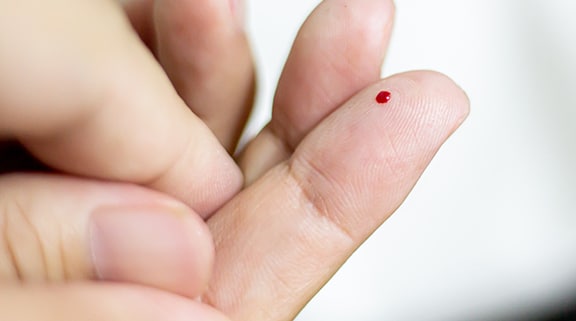Tips For Checking Your Child’s Blood Sugar | ADS
Diabetes management can be a challenge for anyone, but it’s not just adults who have this disease. According to the CDC, roughly 210,000 people under the age of 20 had diabetes as of 2018. And with both type 1 and type 2 diabetes becoming more common in kids, understanding how to manage diabetes at any age is more important than ever.
When you’re helping your child live a successful and healthy life while managing diabetes, there are countless things you’ll need to keep in mind. One essential factor in successful diabetes management is blood sugar testing. To make this process relatively pain-free for your child, follow our tips for using a diabetes lancet device and other equipment.

Why Kids Need To Check Blood Sugar
Once your child is diagnosed with diabetes, you’ll have to work with their healthcare team to develop a diabetes management plan. This plan will cover their diet, exercise routine, and much more. And to make sure the measures included in the program are working, you’ll need to check their blood glucose regularly.
Whether you’re young or old, finger prick tests are an unfortunate reality of life with diabetes. And even though your child’s tiny fingers might be extra-sensitive, you can’t afford to skip out on these tests. Blood sugar testing is essential because it can:
- Show how your child’s diet, exercise, and medications affect their diabetes
- Help you change their diabetes management plan if needed
- Give your child a chance to avoid diabetes symptoms
- Lower the risk of future complications
- Scheduling Blood Sugar Tests
There’s no exact number of daily tests every child with diabetes needs. You’ll have to talk to members of their healthcare team to figure out a testing schedule that’s right for them. Many children with diabetes test their blood sugar before meals and at bedtime, but that may not be the case for your child.
It’s also crucial to realize that your child’s blood sugar testing needs may change from day to day. For example, suppose they get sick or change their diabetes treatment regimen. In that case, they should test their blood glucose more often than average. You may also need to test your child’s blood sugar during the night sometimes, especially if they have episodes of hypoglycemia.
Blood Sugar Testing Tips
If your child has diabetes, there’s no getting around the need for finger prick tests. However, there are a few ways you can help make this process as quick and painless as possible.
Try A Lancing Device
There’s a definite learning curve to the blood sugar testing process, but it can be particularly complicated for youngsters. A great way to simplify things is by picking up a lancing device. These are made to hold lancets and can allow your child to test their blood sugar with the touch of a button.

Experiment With Depth Settings
Let’s expand on that last point: a high-quality lancing device should allow users to try different depth settings. When these settings are adjustable, your child will be able to determine how far the lancet goes into their finger ahead of time.
Finding the correct depth setting is crucial for cutting down on glucose testing-related pain. Your child should start with a lighter depth setting, as these settings are the least painful to use. They can stick with this setting if they can get a good blood sample; otherwise, they can increase the depth a bit and try again next time.
Use The Right Lancets
Your child’s lancing device won’t be beneficial if they don’t have lancets to use with it. Lancets come in different gauges, and larger numbers indicate thinner needles.
Thin needles are less painful than their thicker counterparts, so starting with them is a good idea. If they don’t work as well as they should, your child can use thicker alternatives the next time they need to test their blood sugar. But no matter what, make sure your child knows not to reuse lancets – they need to be disposed of after use.
Take Care of Fingers After Tests
If these tips aren’t enough to mitigate your child’s sore fingers, certain skincare products may help. One excellent choice is tea tree oil, which they can apply to their fingers twice a day. This oil can help reduce pain, and it shouldn’t be hard to find in your nearest pharmacy.
Consider a CGM
Though you can’t eliminate your child’s need for finger prick tests, modern technology can help you reduce the number of tests they’ll need to do. With continuous glucose monitoring (CGM) systems, people with diabetes can observe their glucose levels throughout the day without fingersticks.*
Not all CGMs can be used by patients of all ages. As a result, you’ll need to do some research before making a decision. Get started by exploring the CGMs available from ADS – not to mention our diabetes testing supplies and glucose meters!
*Use a blood glucose meter to confirm any highs or lows and when your symptoms do not match your sensor’s readings.






